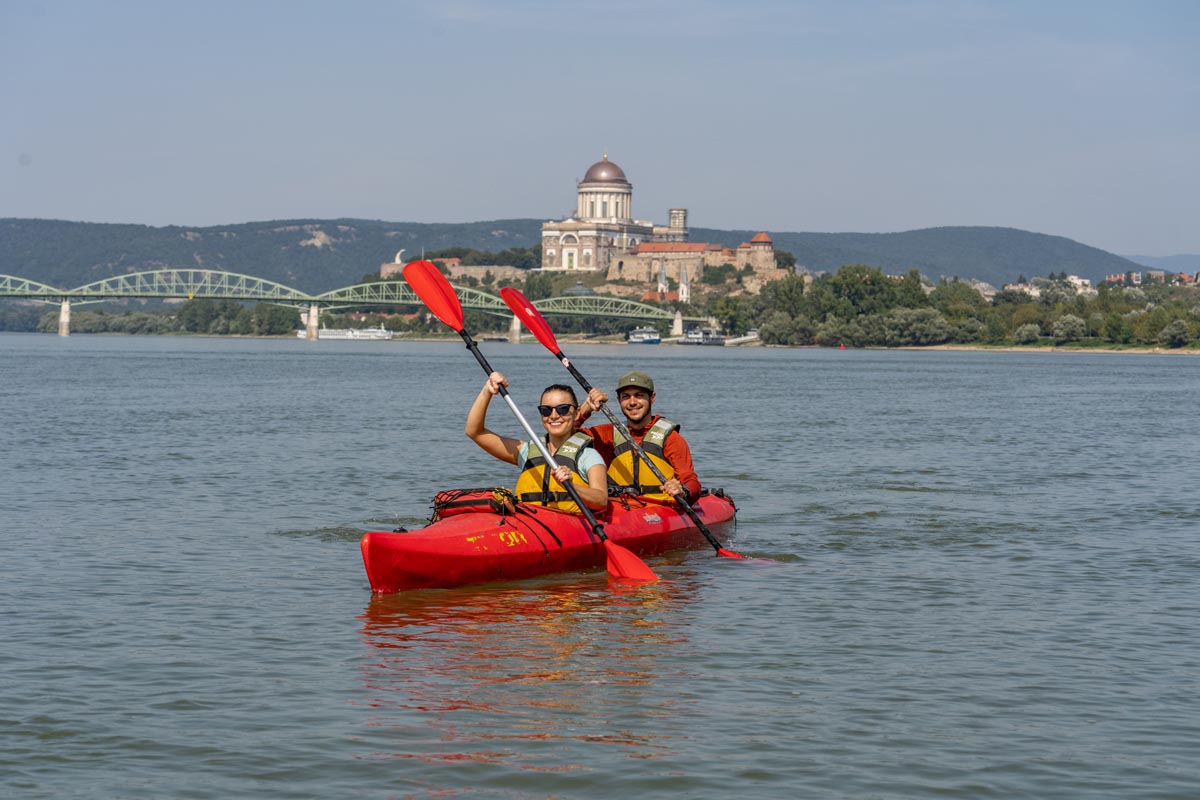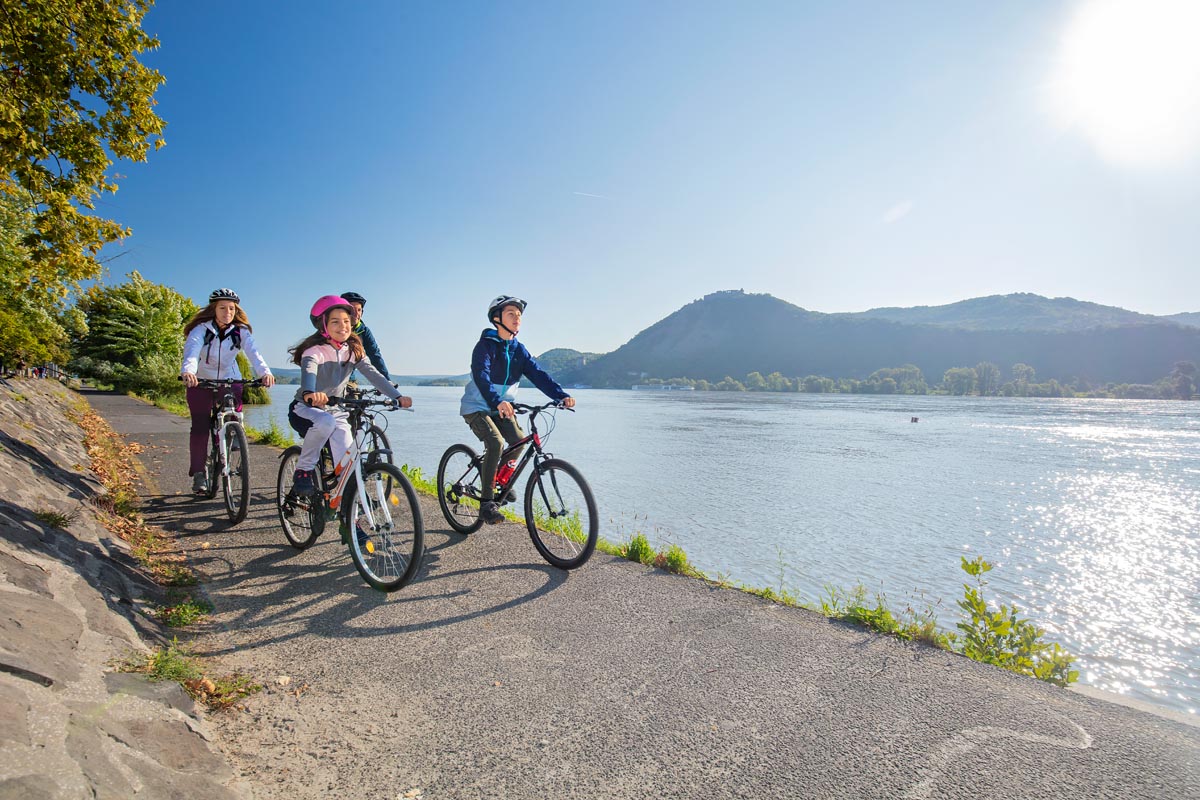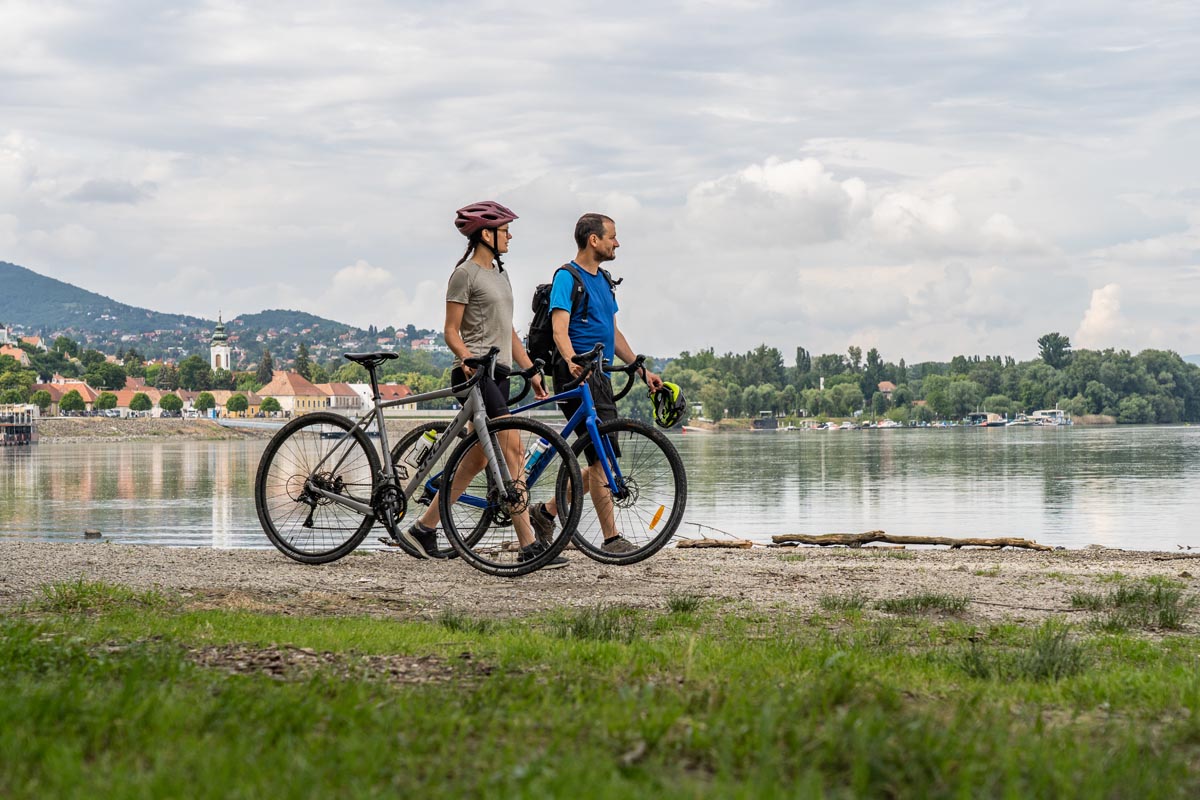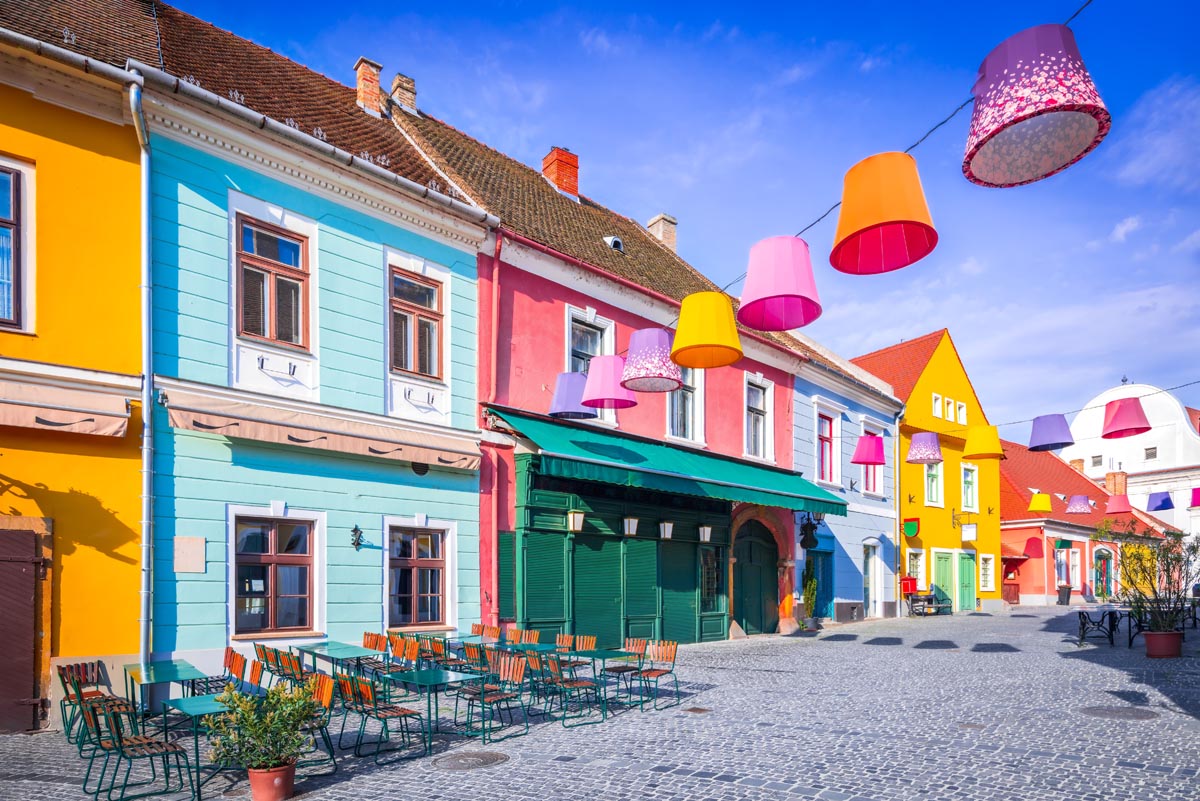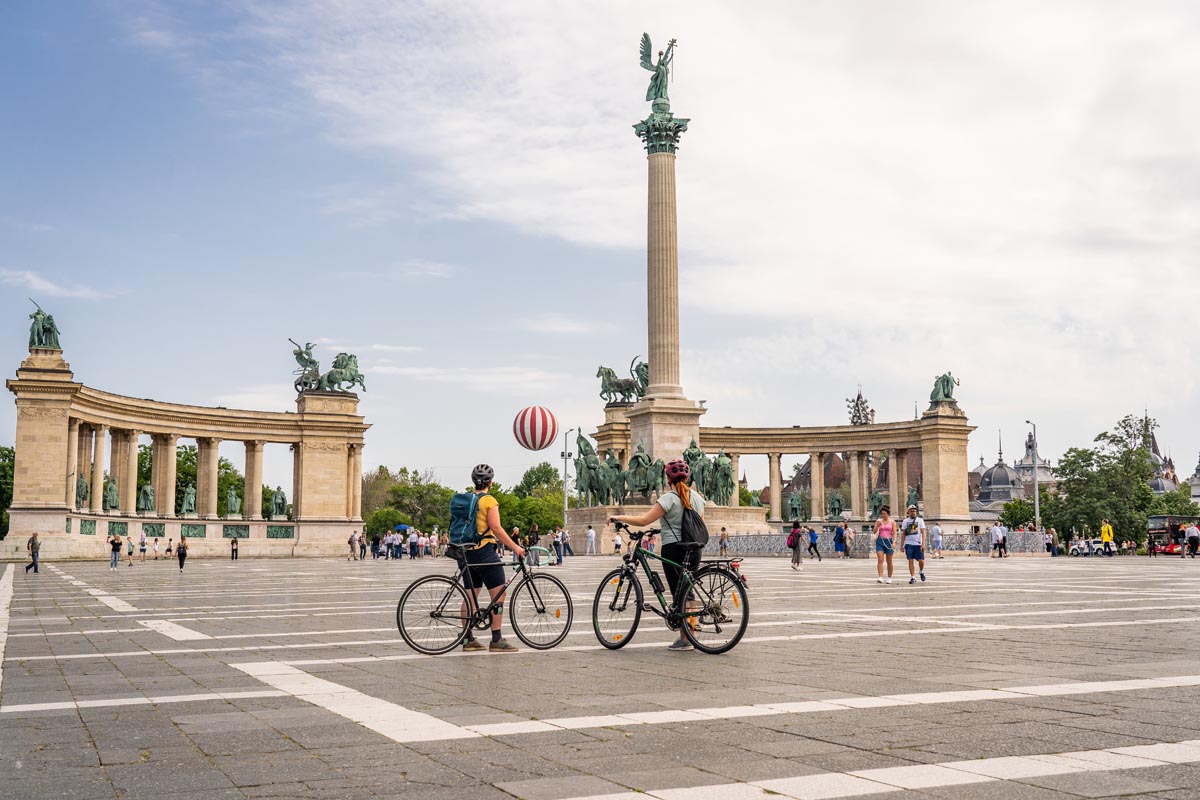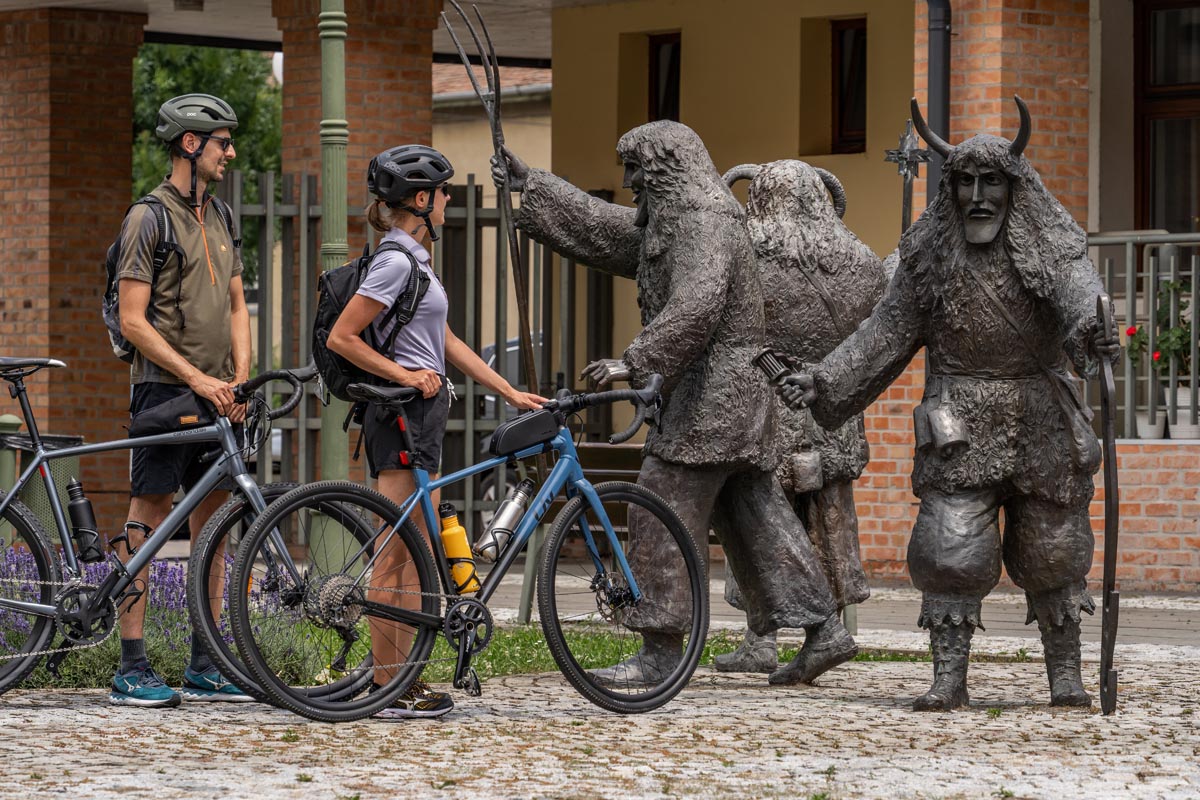Hungary
For cultural diversity and breathtaking scenery, choose the Hungarian section of the Danube! If you cycle along the river from Slovakia, after crossing the Hungarian border you will first come to the Szigetköz region with its wild, romantic atmosphere, where you can enjoy truly unspoilt nature. The city of Győr, rich in monuments and a paradise for water sports, is well worth a visit. Then there are the picturesque landscapes and beautiful towns of the Danube Bend, whose hills offer a magical panorama of the river. Arriving in Budapest, you can soak up the unique and deservedly famous atmosphere of the Hungarian capital, which is at once historic, youthful and spectacular. Heading south from Budapest, you will once again be surrounded by the wonders of nature, which will help you to remember the special feeling of Hungary for a long time as you continue towards Serbia.
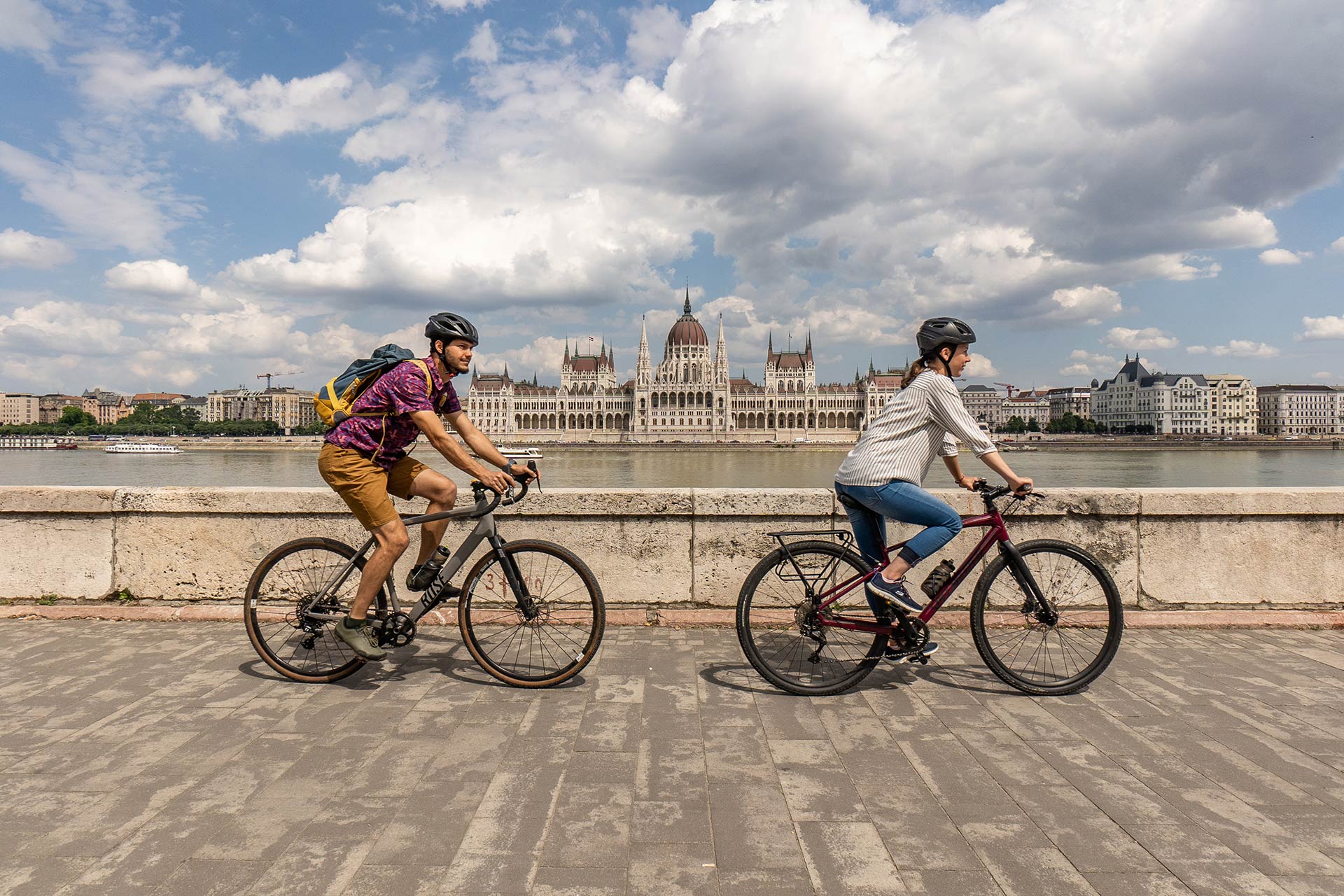
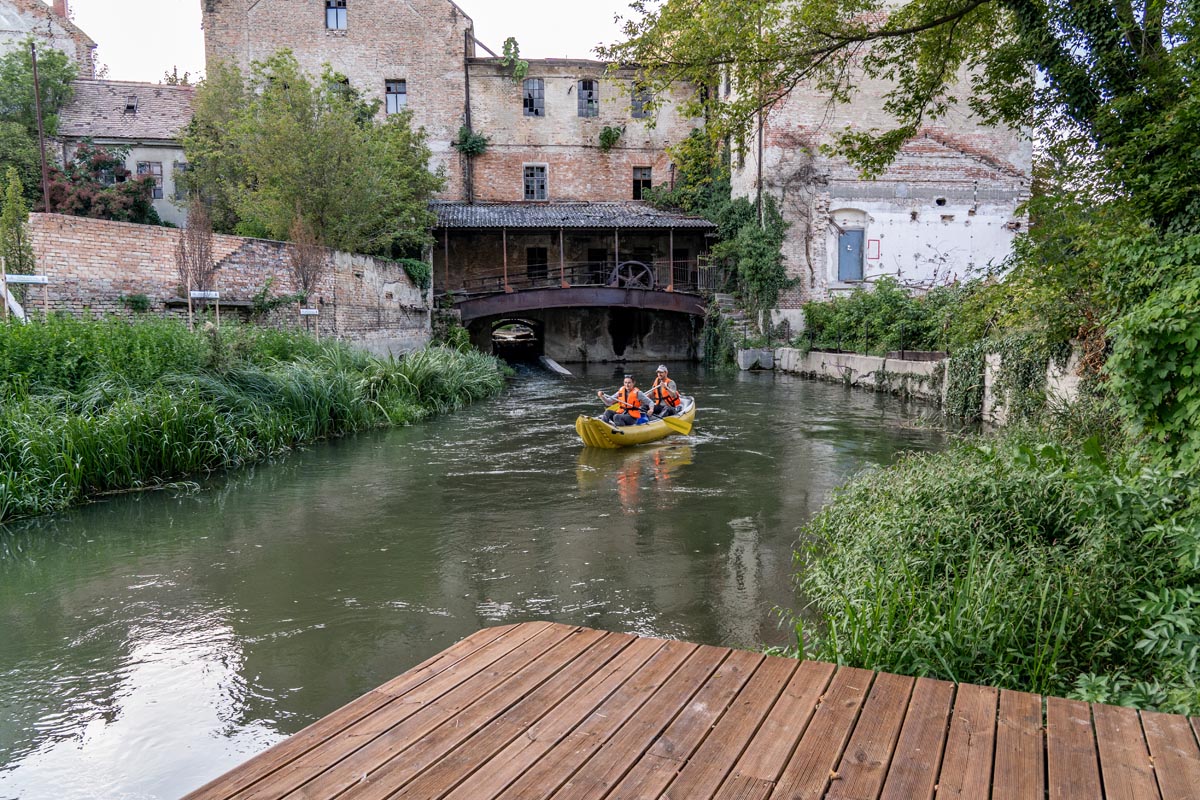
Starting from France, the EuroVelo 6 route first takes you through the beautiful natural landscapes of the Szigetköz region upon entering Hungary. In Mosonmagyaróvár, it is worth stopping to visit the castle established by King Stephen, the founder of the state. You can explore the surroundings of the castle and the city centre in an exciting circular tour by paddling on the Moson-Danube and its tributary, the Lajta. From the eco-park located on the outskirts of nearby Dunasziget, you can embark on another short canoe trip before continuing your bike ride to the city of Győr.
Adventure through the romantic Szigetköz!
Downloadable map and more info:

Győr, Hungary’s third richest city in monuments, awaits with magnificent Baroque buildings, charming pedestrian streets, and a world-famous ballet company. Don’t miss the Bishop’s Castle Lookout Tower and the Cathedral of the Assumption of Mary while here – the latter holds one of Hungary’s most important historical relics, the reliquary containing the skull of King Saint Ladislaus. Situated at the confluence of three rivers – the Rába, the Rábca, and the Moson-Danube, Győr is also a paradise for water sports enthusiasts.
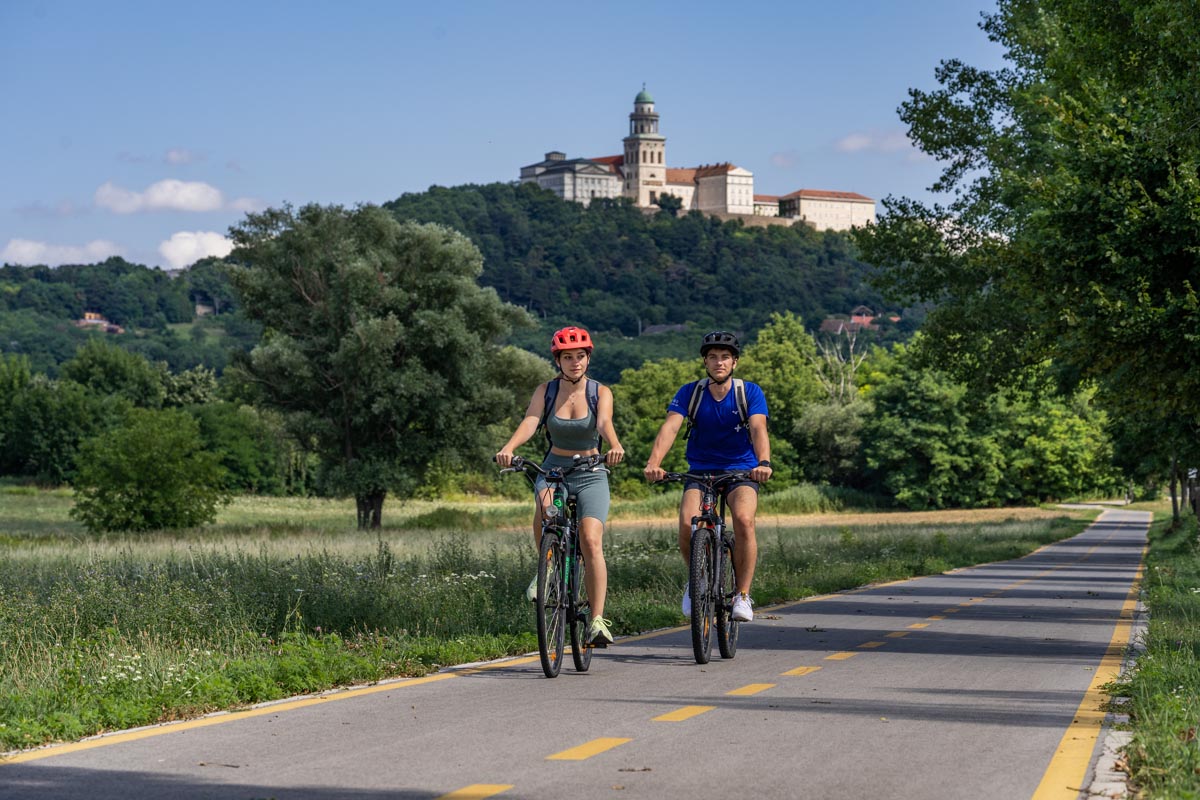
From here, deviating from the EuroVelo route, it’s worth cycling towards the thousand-year-old Saint Martin’s Hill, also known as Pannonhalma. The monastery standing on the “Holy Mountain of Pannonia” (Mons Sacer Pannoniae), along with the monastic community within it, is as old as the Hungarian state itself. The historical complex of the Archabbey, towering on top of the hill and dominating the landscape, encapsulates Hungary’s entire millennium-long history.
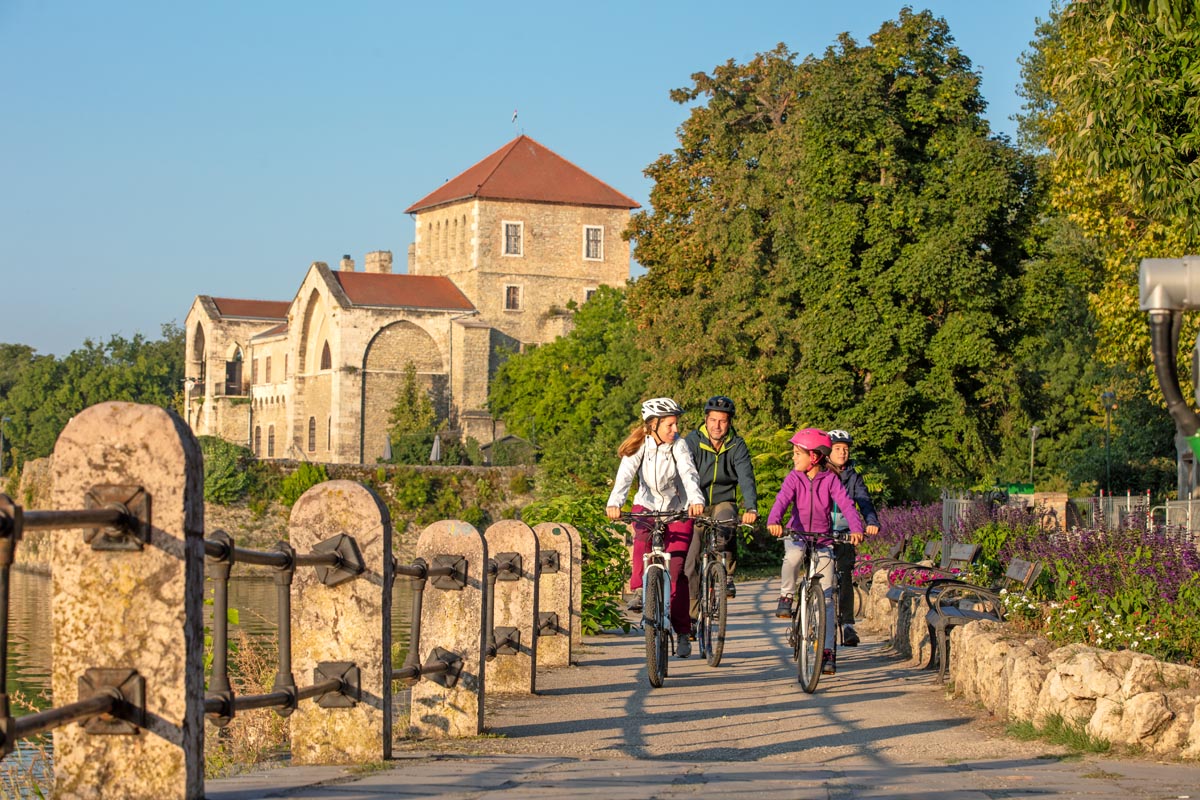
EuroVelo 6 then continues, passing through Komárom along the Hungarian-Slovak border towards Esztergom. Along the way, you can make a charming detour to the 2020 Hungarian bike route, which runs between Tatabánya and Tata. As you cycle along the picturesque shores of Lake Öreg in Tata, you can admire a seven-century-old castle, try out one of the country’s best restaurants, and roll on to the Fényes Educational Path, showcasing natural treasures.
Take a break in the border town of Komárom!
Downloadable map and more info:
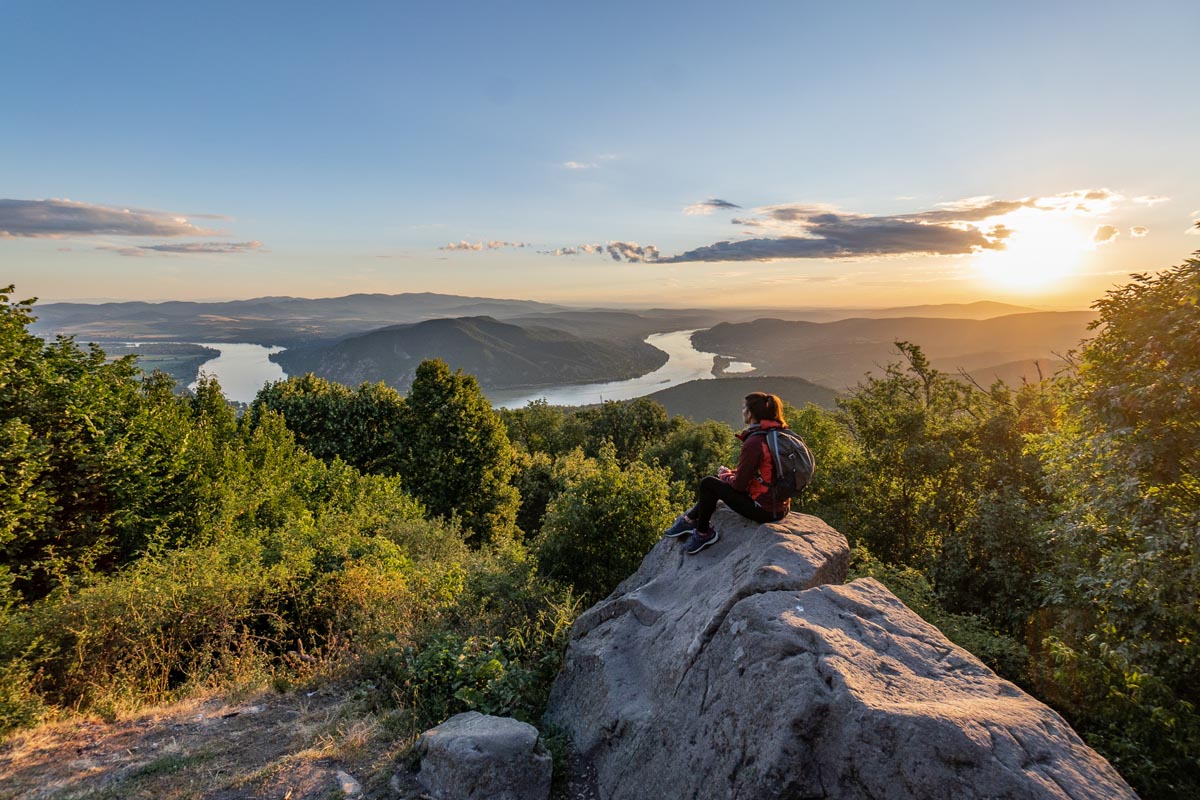
The next must-see stop on the EuroVelo 6 route is Esztergom, whose main attraction, the neoclassical basilica, towers on its highest point, Castle Hill. The building, with its height of 100 metres, is one of the largest cathedrals in Hungary and Europe. The surrounding Danube Bend is rich in sights: you can wander the wild forest trails of Pilis or trace the history in the riverside settlements. The iconic landscape here is shaped by the blue ribbon of the Danube, which has carved a path between two volcanic mountain ranges. On one side, the pyramid-like peaks of Börzsöny, and on the other, the ranges of the Visegrád Mountains, shaped its unique, winding path about one and a half million years ago. The beauty and uniqueness of the Danube Bend make it one of the most iconic landscapes of the Carpathian Basin, featuring stunning viewpoints such as the Prédikálószék. This region is not only rich in cultural and historical values but also serves as an inspiring environment: significant works of Hungarian fine and applied arts, poetry, and literature were created here.
After Esztergom and the romantic groves and wooded hills of Zebegény, you can take a ferry from Nagymaros to Visegrád. Don’t miss it, because the courtyard of the Visegrád Citadel offers perhaps the most beautiful view of the Danube Bend.
Visit the spectacular Basilica of Esztergom!
Look down on the Danube Bend from the Visegrád Citadel!
Downloadable map and more info:
On your way to Budapest, you can cycle through Szentendre, the city of painters, where the bike path takes you along the Danube Promenade, which is the heart of the town with its exciting mix of restaurants, galleries, and churches. Stopping in the downtown area, you can stroll through Mediterranean-style cobblestone streets, discover museums and galleries, and visit the nearby Open-Air Ethnographic Museum, known as the Skanzen, offering a journey back in time to Hungary’s rural regions. From Szentendre, the EuroVelo 6 route leads you directly to Budapest.
Get lost in the picturesque streets of Szentendre!
Downloadable map and more info:
Among the must-see sights of the Hungarian capital is the Parliament building, designed in a Neo-Gothic style, which is the largest building in the country and a UNESCO World Heritage site. Be sure to also visit Buda Castle – from the lookout terraces of the Fisherman’s Bastion in the castle district, you will get an unparalleled view of the city, the Danube, and its bridges. The Citadella atop Gellért Hill, also part of the World Heritage, was erected by the Habsburgs in the 19th century. It offers a memorable panorama, with the Hungarian Statue of Liberty standing tall and visible from afar. It is definitely worth cycling to Heroes’ Square as well: This important symbol of Budapest was built for the 1896 millennium celebrations and won the grand prize at the 1900 Paris World Exhibition. A great place to rest is the City Park next to Heroes’ Square, with its extensive green area, lake, and the Vajdahunyad Castle on its shore, which is a replica of a castle originally located in Transylvania. In the City Park, you will also find the Széchenyi Thermal Bath, perfect for refreshing after your ride. Of all the world’s capitals, Budapest has the largest number of thermal and spa springs and is rightly known as the city of spas – the Gellért, Rudas, and St. Lukács spas are among the most popular.
Walk through Budapest’s World Heritage Sites!
Admire the impressive Parliament of Hungary!
Hike up to Buda Castle for a wonderful panoramic view of the city!
Heading south from the capital, the EuroVelo 6 runs along the Ráckeve-Soroksár Danube, where you can stop in Ráckeve to see Hungary’s last boat mill. Riding along the river, often on flood protection embankments, you can admire the untouched floodplain forests. A worthwhile detour is to Kalocsa, a significant historical and cultural centre of Hungary, known for its floral motif embroidery and traditional dresses. Continuing towards Serbia, don’t miss tasting the famous Baja fish soup! Along the way, you can enjoy the landscape from lookouts like the István Türr Lookout, and on hot summer days, you can refresh yourself at beaches like Sugovica Beach. From Újmohács, you can take a ferry to the town of Mohács before saying goodbye to Hungary. Mohács is known for its Busójárás, a festival of wooden-masked “monsters” celebrating the end of winter. This internationally renowned folk custom is listed as an Intangible Cultural Heritage by UNESCO.
Be a part of the special traditions of Mohács!
Downloadable map and more info:



